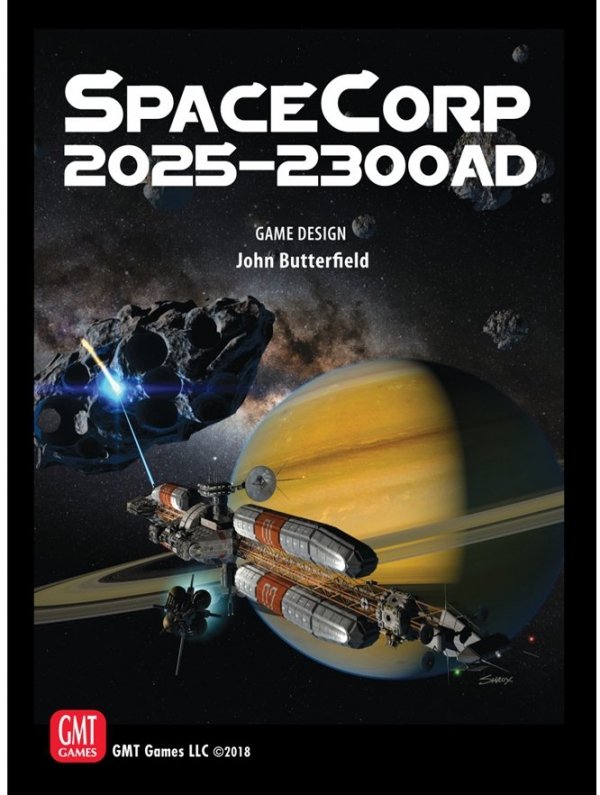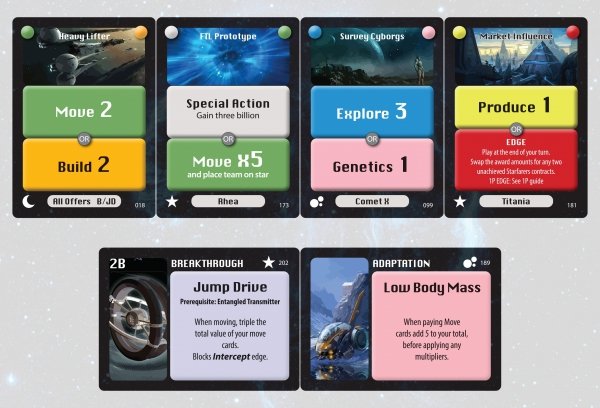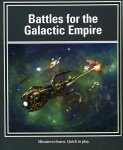-
Załączniki bezpieczeństwa
Załczniki do produktuZałączniki dotyczące bezpieczeństwa produktu zawierają informacje o opakowaniu produktu i mogą dostarczać kluczowych informacji dotyczących bezpieczeństwa konkretnego produktu
-
Informacje o producencie
Informacje o producencieInformacje dotyczące produktu obejmują adres i powiązane dane producenta produktu.GMT Games
-
Osoba odpowiedzialna w UE
Osoba odpowiedzialna w UEPodmiot gospodarczy z siedzibą w UE zapewniający zgodność produktu z wymaganymi przepisami.
SpaceCorp: 2025-2300 AD is a fast-playing board game in which one to four players explore and develop outer space over three eras. Each player controls an Earth-based enterprise seeking profit by driving the expansion of humanity into the Solar System and beyond. In SpaceCorp you can …
- Assemble a spaceport at a Lagrange Point.
- Launch an exploration mission to Mars.
- Mine the asteroids.
- Earn profit from exotic resources discovered on the Jovian moons.
- Discover microbial life in the subsurface oceans of Charon.
- Decode exo-DNA to develop radiation resistant human pioneers.
- Undertake a mission to Alpha Centauri in a generation ship.
- Break through technological barriers to achieve faster than light travel.
- Establish a colony in the Tau Ceti star system.
Each of the three eras is played on a different board:
- The first era, Mariners, covers exploration and development out to Mars.
- In Planeteers, players settle the outer solar system.
- In Starfarers, players send missions to nearby star systems and establish interstellar colonies.
Course of Play
Players can choose to play a short game, covering just one era, or can play the full game covering all three eras and representing three hundred years of human expansion into the cosmos. Rules and systems for a complete solitaire game covering all three eras are included.
Players take turns playing cards to conduct actions with their teams and bases. Your turn consists of playing one or more cards of a single action type, with the option to augment the play with infrastructure, a time card or the attributes of a base.
For example, playing Move cards with a total value of 5 allows you to move a team from Earth to a Solar Lagrange Point. Other card plays allow a team on an asteroid or moon to explore there, or to build a base such as a spaceport, a refinery or a bio lab. You can also play cards to conduct research (draw new cards), production (gain profit from a site with resources), genetics (advance toward gaining genetic advantages for your teams), revelations (advance toward gaining technological breakthroughs), as well as special actions such as deep space probes and prototypes.
Some cards can be played as infrastructure, giving you permanent bonuses when conducting future actions.
During the game you earn profit from exploration discoveries, by conducting production at resource sites, and by completing contracts. For example, a contract in the Mariners era rewards the first player to build a base on Mars. The player with the most profit at the end of the game wins but there are many ways to get there. Will you focus on …
- being the first to explore new horizons beyond known space?
- developing genetics and tech breakthroughs for spacefaring humans?
- exploiting the resources of space?
- beating other players to contract awards?
or will you go rogue, striking from your secure pirate bases?
Components:
· Three space maps on two mounted boards (two maps are back-to-back)
· Four player mats, each for holding infrastructure cards, legacy production sites, and a progress wheel for tracking advances in genetics and technology.
· Four sets of player pieces, each with four exploration team cubes, 27 base discs representing specialized space installations, and various markers.
· 61 exploration tiles, drawn and placed on the board to represent discoveries.
· Twenty colony tiles, placed to establish interstellar commerce centers.
· One contract and profit display for tracking the players’ profits and their achievement of contracts.
· 178 action cards, organized into three decks, one for each era. Cards include eight action types – move, build, explore, research, produce, genetics, revelation and special actions, as well as competitive edge cards andtime cards.
· 32 advancement cards, earned by players as they gain specific genetic adaptations and technology breakthroughs.
· Twenty miscellaneous game markers
· Nine player aid cards











